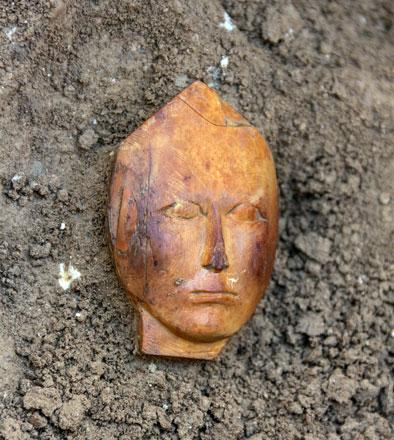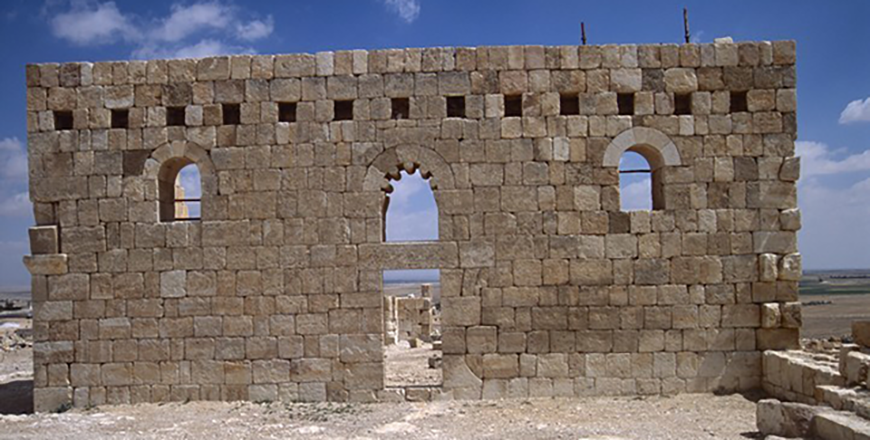You are here
‘Levant’s transition to Islamic rule was gradual for majority of population’
By Saeb Rawashdeh - Jan 17,2019 - Last updated at Jan 17,2019

After taking control of the Levant, the Umayyads introduced a new floor plan for ‘oriental houses’, seen being excavated in this undated photo (Photo courtesy of ACOR)
AMMAN — The transition from the Byzantine to Early Islamic period was drastic when looks at only historical literary sources, claimed a French scholar from the University of Paris-Panthéon-Sorbonne.
“After a short-lived Sassanid occupation of the Levant from 614-628AD, the conquest by Islamic armies remained a shock for savants. For instance, a handful of chroniclers interpreted the failure of the Byzantine Empire to control their territory as the waning of their golden age,” Apolline Vernet said.
Vernet added that from a top-down viewpoint, the battle of Yarmouk was a significant moment in breaking Byzantine dominion over the Levant.
Gradual change
However, the gradual establishment of the new Islamic ruling-system is a tangled and complex narrative, she continued, noting that the first decades of the Islamic state in the Near East are punctuated by both back-and-forth battles along the frontier areas of the empire and civil war.
“During the reign of Muawiya Ibn Abu Sufyan, he tried to calm tensions between ruling factions to some degree, but the new administrative shift is mostly attributed to the Caliph Abdel Malik Ibn Marwan,” Vernet said.
Marwan, who ruled between 685 and 705 AD, introduced reforms that standardised Islamic administrative practices and solidified Arabic as the official administrative language. He also ordered inscribed milestones to be placed on the main roads within the territory.
From the bottom-up viewpoint, recent studies have emphasised the resilience of local inhabitants — or their ability to compromise with the new socioeconomic and political realities, the scholar explained.
The governor of a province had military, administrative and fiscal duties, but he was also responsible for the inhabitants’ environment by maintaining and improving civil works and public facilities, she underlined.
“The relationship between the governor and the local population would have been quite close, as suggested by contemporary Egyptian papyri and recent studies”, Vernet pointed out.
In general, the shift from Byzantine to Islamic rule was a step-by-step process over the course of the 7th-8th centuries AD — rather than one explosive event. “It echoes in the archaeological remains that show no evidence of societal collapse or destruction of sites in the Near East.”
Decapolis during transition
When it came to the established sites in the area such as the Decapolis, they did not face abrupt change following the Islamic conquest, Vernet explained.
“Nonetheless, the integration of the new Muslim population and practices can be discerned by archaeology through different means.”
Vernet claimed that the congregational mosque was the focal point for urban Muslim communities and would have been constructed in most of cities during the Umayyad period.
The scholar added that the most remarkable one in Jordan is the mosque located in the ancient city centre of Jerash.
“Another aspect to the city’s transformation during the first years of Islam was the increase of pottery workshops and kilns within the city,” Vernet said, noting that the ceramics produced were sold locally in the various shops near the mosque, but were also sent abroad to marketplaces in other regional cities.
However, in the case of Pella, in north-western Jordan, the scholar said that “no mosque from the Umayyad period has been recorded yet — not even a palatial centre”.
Nevertheless, several houses discovered on the hill can attest to the continuity of daily life during the transition from Byzantine to Umayyad rule, she underlined.
A study of Pella’s artefacts, some of which, along with their owners, were sealed away by an earthquake in 750AD, showed that new decorations and shapes were used for tableware after the conquest.
Vernet said there is no indication Pella’s inhabitants converted to Islam, and instead seemed to be wealthy merchants living under Umayyad rule.
Seized in 634 or 635, the ancient city of Amman kept its former status as a prominent city during the Umayyad period, she said, adding that the only evidence for this period in the lower city is a mosque, which is no longer visible.
"In contrast, the citadel was renovated to accommodate the regional administration of the province," the French researcher said, adding that in addition to a palace, cistern, market and a mosque, archaeologists also uncovered a residential quarter.
These three cities show the wide range of both continuity and transformation that affected Byzantine cities after the Islamic conquest. Even if the preexisting structures are still standing, new trends appeared in economic, administrative and everyday life.
'Oriental house'
The “the oriental house”, or “central courtyard house” is a type of structure that dates back to prehistoric times, and was constructed for centuries from northern Syria through Arabian Peninsula, Vernet said.
“It suits the requirements of the warm climate with a simple but effective plan: the living rooms surround the courtyard, where shade can be easily made with a piece of fabric in a corner, a tree or a peristyle,” she noted, saying that the “central courtyard house” was very common during Byzantine and Islamic rule.
Nevertheless, one has to note that this type of plan was widely constructed in the aristocratic castles and newly-founded cities during the Umayyad period, Vernet said.
“The plan would serve as a dwelling unit in the aristocratic complex... and it could be used as an apartment to house the family of an official,” the archaeologist underlined.
Moreover, the Islamic period introduced a systematic room pattern, which could be extended from the small “proto-bayt” (a central room leading to two side rooms), to the large “Syrian-bayt” (a rectangular central room leading to two sets of side rooms), Vernet said.
“Both examples are found at the citadel of Amman... Those rooms could have been used for banqueting purposes or to welcome special guests into the house,” she emphasised.
Vernet said that even though the Islamic period in the region was embedded with an ancient foundation, “the study of housing practices highlights new living habits and customs introduced by newcomers following the Islamic conquest”.
Related Articles
AMMAN — The Umayyad architecture and art had been significantly influenced by the Roman, Byzantine and Sassanid models, resulting in distinc
AMMAN — The latest excavations of ancient Pella (modern Tabaqat Fahl) in the Jordan Valley uncovered beautiful art tools from a large stone
AMMAN — The Umayyad period represents a very dynamic phase in the history of the Levant in terms of the political transition, architecture a


















